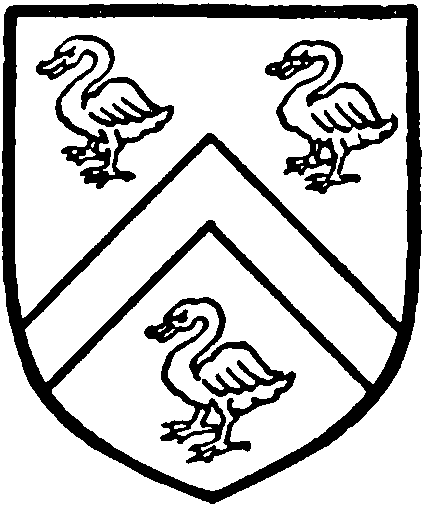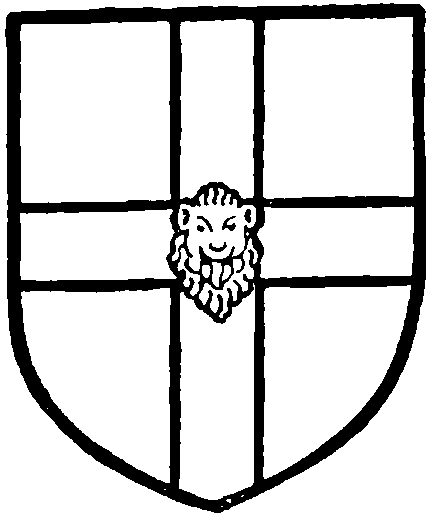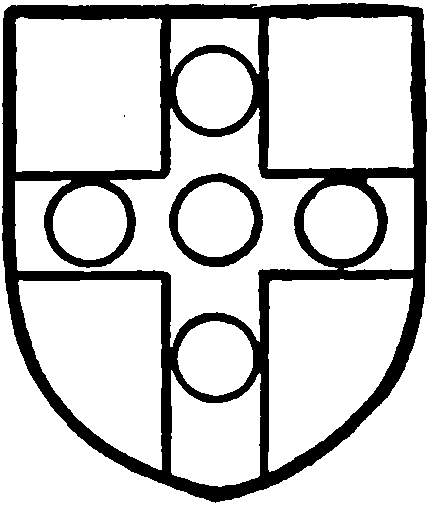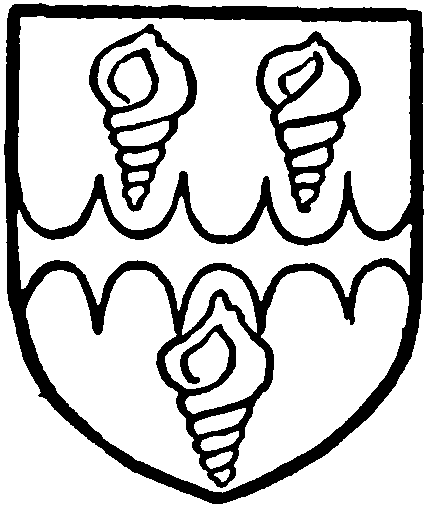A History of the County of Hampshire: Volume 3. Originally published by Victoria County History, London, 1908.
This free content was digitised by double rekeying. All rights reserved.
'Parishes: Avington', in A History of the County of Hampshire: Volume 3, ed. William Page (London, 1908), British History Online https://www.british-history.ac.uk/vch/hants/vol3/pp306-308 [accessed 30 April 2025].
'Parishes: Avington', in A History of the County of Hampshire: Volume 3. Edited by William Page (London, 1908), British History Online, accessed April 30, 2025, https://www.british-history.ac.uk/vch/hants/vol3/pp306-308.
"Parishes: Avington". A History of the County of Hampshire: Volume 3. Ed. William Page (London, 1908), British History Online. Web. 30 April 2025. https://www.british-history.ac.uk/vch/hants/vol3/pp306-308.
In this section
AVINGTON
Avintun (xi cent.); Avintun, Yabyndon, Abingdon, (xiv cent.).
The parish of Avington lies to the east of Winchester, the land rising southward from the west bank of the Itchen to Cheesefoot Head, which attains a height of some 600 ft. above the sea level, and tops the chalk downs stretching to the east from Winchester. The area was extended in 1889 by the addition of detached portions of Easton, Itchen Abbas, and Itchen Stoke, and now contains 26 acres of water and 2,927 acres of land, of which 1,107½ acres are arable land, 914 acres permanent grass, and 388 acres woodland. (fn. 1)
Avington Park, with its fine stretches of undulating country and its magnificent trees, described by Cobbett in 1830 as 'one of the very prettiest spots in the world,' (fn. 2) covers nearly the whole of the north of the parish, extending over about 300 acres. Avington House, the seat of the Shelley family, stands almost in the heart of the woodland. The western corner of the park is in Easton parish, from which direction a narrow winding road runs south-east across the park to the eastern gate. As the road curves to the south a few yards past the western lodge Avington House lies to the left, with its background of dark woodland and with the lake, a narrow strip of water about a mile long on the north and north-west, in the foreground. Cobbett describes how the high road through the park goes very near the water, and adds, 'We saw thousands of wild ducks in the pond or sitting round on the green edges of it, while, on one side of the pond, the hares and pheasants were moving about upon a gravel-walk on the side of a very fine plantation.' (fn. 3) The house itself is a fine red-brick mansion, and was used as a residence by Charles II when his palace at Winchester was being built. The stone pillars of the original hall still remain, and form the supports of the modern conservatory.
Past the eastern gates the road across the park turns north-west near by Pits' farm, and passing the schools, which lie well back from the road on the right, and curving sharply down hill by two or three cottages which lie behind a low hedge on the left, becomes the main village street. Thus the small thinly-populated village nestles almost in the centre of the park, and seems to be closely dependent on Avington House, bringing back a semblance of old manorial life. A few simple cottages and the original and now dilapidated small square graveyard are on the southern side of the road. A high wall of the park, hiding Avington House from sight, runs along the opposite side of the road as far as the church, which lies well back behind a narrow modern graveyard. The rectory, a square white building, stands immediately south-east of the church. The road continues through the parkland, branching both north to cross the lake by a rustic bridge and lead on to Itchen Abbas, and north-west through a long stretch of the park to the saw-mills, which stand at the head of Avington lake, and from thence south to Ovington. South of the park the centre of the parish is covered with thick woodland, Hampage Wood and Little Hampage Wood, of which mention is made as far back as the year 1306, when licence was granted to the prior and convent of St. Swithun, who then held the manor, to inclose their wood called 'Hemepynge Wood in Avington parish,' saving the right of the rector to drive his cattle into it. (fn. 4)
A legend also connects Hampage Wood with a still earlier date. When Winchester Cathedral was being built, Bishop Walkelin being in need of timber asked William the Conqueror for the gift of as much timber as he could carry away from Hampage Wood in four days and nights. The king consented, and the bishop, having collected all the woodmen from the surrounding country, managed to clear the wood with the exception of the one tree under which St. Augustine was said to have preached. The hollow shell of a tree, kept together by iron bands and protected by an iron fence, still stands in the wood, and is known locally as Hampage or Gospel Oak.
In the southern part of the parish is a picturesque dell called Temple Valley, the lower end of which is thickly wooded; while to the south of the valley lies Cheesefoot Head, from which fine views of the country can be obtained, Winchester lying away to the north-west, the Itchen valley to the north, and to the south and east undulating down country and dark woodland. The soil is loam and chalk; the subsoil clay. The chief crops are wheat, oats, barley and turnips.
MANORS
The earliest mention of AVINGTON seems to be in the year 961, when King Edgar granted land here to the monastery of St. Peter and St. Paul at Winchester, (fn. 5) afterwards called St. Swithun's Priory. (fn. 6)
At the time of the Domesday Survey it was held by the bishop (fn. 7) in demesne, and the assessment had risen from £6 in the time of King Edward to £10. (fn. 8) Avington was confirmed in 1205, and again in 1285, (fn. 9) to the prior and monks of St. Swithun's and remained in their hands until the time of the Dissolution. (fn. 10)
In 1291 Avington was numbered among the St. Swithun's temporalities, and was valued at £9 13s. (fn. 11)
It was valued at £22 7s. 8d. in 1535, and was in the hands of William Basing, cook and keeper of the priory granary. (fn. 12)
After the dissolution of St. Swithun's Priory Avington was granted to the dean and chapter of Winchester. (fn. 13) It was one of the five manors which were charged with the maintenance of six students in theology at Oxford and six at Cambridge; and which the king compelled the dean and chapter to surrender in 1545 (fn. 14) (vide West Meon). It was thereupon granted, together with Hampage Wood, to Edmund Clerke and his wife Margaret, to be held in chief for the fortieth part of one knight's fee. (fn. 15) Edmund Clerke died seised of it in 1586, (fn. 16) leaving a son and heir Thomas, who died in 1617, when the estate passed to his son Henry. (fn. 17) It was conveyed by Henry, probably for the purpose of a settlement, to Sir Nathaniel Napper in 1634. (fn. 18) Some time, however, before 1689 the manor was purchased by George Brydges, M.P. for Winchester, who in that year was granted an exemption from having officers or soldiers quartered on his manor-house of Avington. and from having his horses impressed. (fn. 19)

Clerke. Azure a cheveron between three swans argent.
In 1702 it was in the possession of George Rodney Brydges, (fn. 20) and remained with the Brydges family, who in the eighteenth century became dukes of Chandos, until the death of James Brydges, duke of Chandos, without male heirs in 1789, (fn. 21) when the male line of the Chandos family being extinct, Avington and other estates passed from Ann Eliza, daughter of the last duke of Chandos, to the Grenville family, on her marriage with Richard Grenville marquis of Buckingham, who assumed the name of Brydges, and was created duke of Buckingham and Chandos in 1822. (fn. 22)
The declining fortunes of the Buckingham and Chandos families are a matter of recent memory. In the great sale of the late duke's possessions in 1848 Avington Manor passed to Mr. (afterwards Sir John) Shelley, in whose family it still remains; (fn. 23) the present lord of the manor being Sir John Shelley.
In 1301 a grant was made to the prior and convent of St. Swithun of free warren in their demesne lands of Avington. (fn. 24) In 1809 the Grenvilles held courts leet, courts baron, view of frankpledge, and rights of free warren in Avington. (fn. 25)

Brydges. Argent a cross sable with a leopard's head or thereon.
In 1655 the Commissioners for the Sale of Bishops' Lands sold the capital messuage or manor-house called YAVINGTON HOUSE in the parish of Avington, possession of John Unwin, whose estate had been forfeited by treason, to Edward Keate. (fn. 26) This is the only mention of the so-called manor of Yavington.

Grenville. Vert a cross argent with five roundels gules thereon.
CHURCH
The church of OUR LADY was built 1768–71 by Margaret marchioness of Carnarvon, and is a plain red-brick building of chancel, nave and west tower, chiefly interesting from the fact that it preserves its original arrangements with little alteration. Nothing of the former church remains.
Internally it is plastered, with a moulded cornice and arched ceiling, and is fitted with high pews and a pulpit with a domed tester on the south wall of the nave, the 'squire's pew' being as usual large and important, on the north side. By a treatment characteristic of the time, the details of the panelling within the pew are more ornamental than those on the outside.
There is a good panelled reredos at the back of the altar-table, which is inclosed by gilded wrought-iron rails. At the west of the church is a large gallery with the royal arms, dated 1771, on its front, and the font of grey marble has a small bowl on a baluster stem.
On the north of the altar-table is the monument of Margaret marchioness of Carnarvon, 1768, and on the south that of George Brydges, 1751. Other monuments are those of Anna duchess of Buckingham and Chandos, 1836, on the north wall, and of John, only brother of Percy Bysshe Shelley, 1866, on the south, and there are several hatchments in the church.

Shelley. Sable a fesse engrailed between three shells or.
There are six bells of 1771 by Pack & Chapman of London.
The plate consists of a silver communion cup, a large and small paten, and a flagon, each inscribed 'Avington Church, 1829.'
The first book of the registers contains all entries from 1609 to 1812, except those of the marriages from 1754 onwards, which are in a separate book.
ADVOWSON
At the time of the Domesday Survey there was a church at Avington in the possession of the bishop. (fn. 27) The advowson is now and always has been in the hands of the bishops of Winchester. (fn. 28) Avington rectory was numbered among the bishop's spiritualities. In 1291, (fn. 29) 1354, (fn. 30) and 1535 (fn. 31) it was valued at £12.
At the present day the living is a rectory of the net yearly value of £145, including 24 acres of glebe, with residence, in the gift of the bishop of Winchester.
CHARITIES
In 1761 Mrs. Anne Brydges by her will left £1,000 to be invested, and directed that £20 should be paid to the rector for the time being on condition of residence in the parish, or in default to be distributed among poor and decayed old housekeepers living in the parish or adjoining parishes in the discretion of the trustees. In satisfaction of this legacy a sum of £666 13s. 4d. consols is in court under the title of Attorney-General v. Rodney, the dividends of which are regularly received by the incumbent.